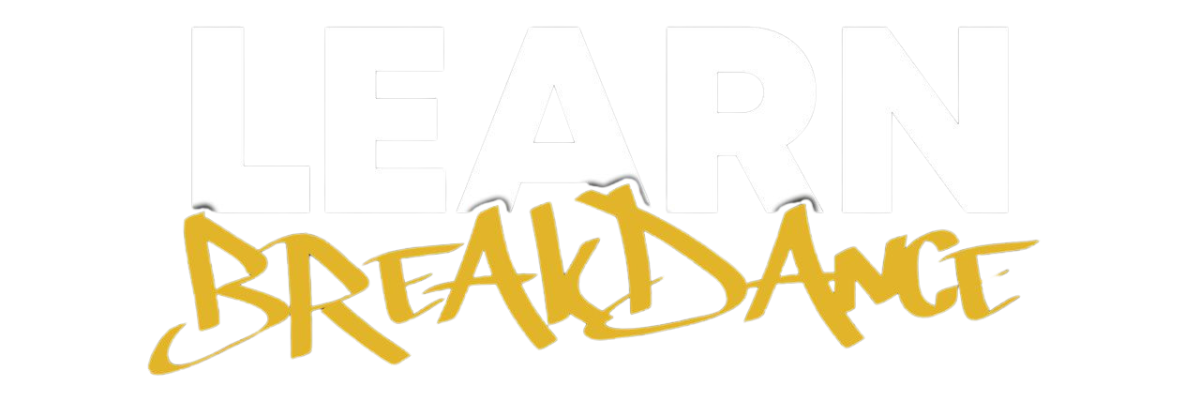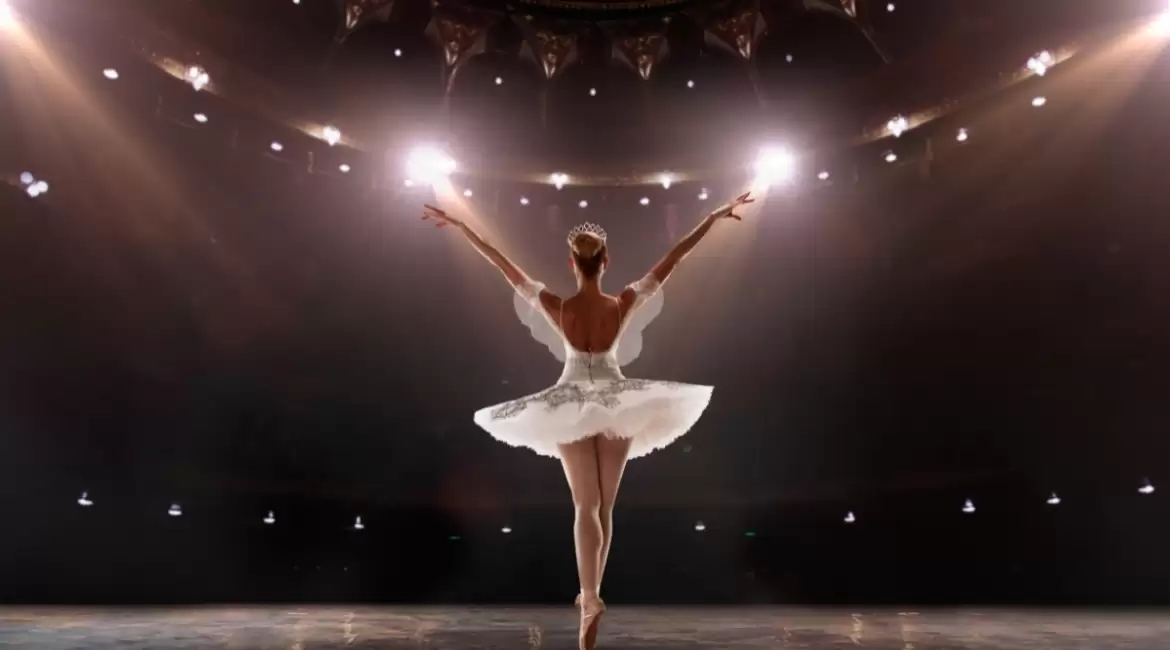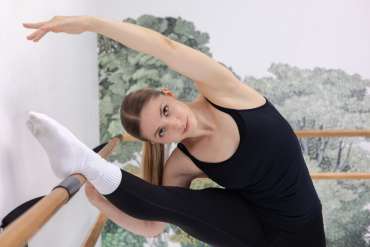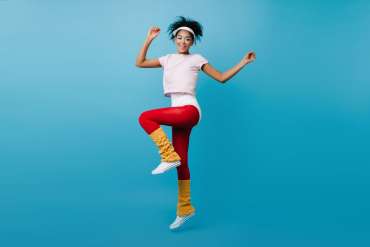Ballet is more than just a dance form; it’s a discipline of grace, control, and precision. Among its many defining characteristics, the impeccable posture of a ballet dancer stands out as a mark of artistry and technical excellence. Whether you’re a budding ballerina or a seasoned performer, understanding and cultivating proper posture is crucial—not just for enhancing your dance technique but also for improving your overall physical and emotional well-being.
In this guide, we’ll delve into the importance of ballet posture, its transformative benefits, and actionable techniques to help you embody the poise and elegance of a professional dancer.
Why Posture Matters in Ballet
Posture forms the backbone—both literally and figuratively—of ballet. It is what allows dancers to maintain balance, execute intricate movements, and create visually stunning lines. Imagine a straight, vertical line running through your spine, from the crown of your head to your tailbone. This alignment is the foundation of all ballet movements, ensuring that the body moves efficiently and gracefully.
The Connection Between Posture and Balance
Good posture is a prerequisite for balance, one of the core elements of ballet. Without a well-aligned body, even basic movements like pliés or tendus can feel unstable and strained. By focusing on posture, dancers can find their center of gravity, enabling seamless transitions between movements.
The Role of Strength and Flexibility
Posture isn’t just about standing tall—it requires a delicate balance of strength and flexibility. Strong core muscles support your spine, while flexible hips and shoulders allow for a greater range of motion. Together, these attributes enable dancers to perform with ease and elegance, whether executing a simple arabesque or a complex series of pirouettes.
What are core muscles? Core muscles are a group of muscles located in the center of your body, including the abdomen, lower back, and pelvis. They are crucial for stabilizing the spine and pelvis, maintaining balance, and supporting your posture. These muscles work together to control movements and protect your internal organs. The core includes several key muscle groups, starting with the abdominal muscles, such as the rectus abdominis (the “six-pack” muscles), the obliques on the sides of the abdomen, and the transverse abdominis, the deepest muscle that wraps around the spine and provides support for the lower back.
In addition to the abdominal muscles, the lower back muscles, including the erector spinae, which run along your spine, and the multifidus, a set of small muscles that stabilize the vertebrae, are also considered part of the core. The pelvic floor muscles are another important group, supporting the organs in your pelvis and contributing to the overall stability of your lower body. Lastly, the hip muscles, including the hip flexors and gluteus muscles, play a key role in stabilizing the pelvis and supporting movements in the hips and thighs.
When these core muscles work together effectively, they help you perform a variety of tasks, from simple actions like sitting and standing to more complex movements such as lifting, running, and dancing. Strengthening the core not only improves posture and balance but also helps reduce the risk of injury, enhances coordination, and boosts overall physical performance.

The Transformative Benefits of Proper Ballet Posture
Ballet posture isn’t just about aesthetics—it offers a host of physical, emotional, and psychological benefits that extend beyond the dance studio.
Enhanced Storytelling
In ballet, posture is integral to storytelling. Whether portraying a graceful swan or a mischievous fairy, your posture conveys emotion and character. By opening your chest and lifting your chin, you can exude confidence, joy, or pride. Conversely, a slightly hunched stance can evoke sadness or vulnerability.
Improved Mood and Energy
Studies suggest that posture can directly influence your mood and energy levels. Standing tall with an open chest can make you feel more energized and positive, while slouching can contribute to feelings of fatigue or low confidence. Simply lifting your head toward the sky can be a quick pick-me-up, helping you channel your inner strength both on and off the stage.
Physical Health Benefits
Practicing good posture protects your body from unnecessary strain and injury. Misalignment can lead to chronic pain, particularly in the neck, shoulders, and lower back. By maintaining proper posture, you can reduce the risk of injury and ensure that your body moves efficiently. Moreover, the consistent practice of ballet can sculpt your physique, creating lean, toned muscles and an upright stance that radiates confidence.
Inspirational Words on Posture
“Unless some misfortune has made it impossible, everyone can have good posture.” – Loretta Young
Daily Practices to Achieve Perfect Posture
Mastering ballet posture is a gradual process that requires daily practice and commitment. Even dedicating a few minutes each day to posture exercises can yield significant improvements.
The Essentials of Ballet Attire
Before starting your practice, ensure you’re dressed appropriately. Comfortable dancewear and well-fitted ballet shoes are essential for unrestricted movement. For beginners, a ballet barre can provide additional support while learning foundational techniques.
What is barre? A barre is a stationary handrail, typically made of wood or metal, used in ballet training to provide support and stability while performing various exercises. It is usually mounted to the wall at waist height and serves as a tool for dancers to maintain balance during their warm-up routines and practice of basic ballet techniques.
Barre exercises are fundamental in ballet training and are designed to strengthen muscles, improve flexibility, and refine posture. Dancers use the barre to practice a wide range of movements, such as pliés (bending the knees), tendus (stretching the legs), dégagés (lifting the leg off the floor), and other foundational steps. The barre provides security, especially for beginners or those practicing more challenging movements, allowing them to focus on form and technique without worrying about balance.
Barre exercises help dancers develop strength in the legs, feet, and core while promoting proper alignment and muscle memory. While originally used in ballet, barre workouts have become popular in fitness regimes, often incorporating ballet-inspired movements for strength, flexibility, and toning.
Foundational Steps for Better Posture
To stand like a true ballerina, follow these simple yet effective steps:
- Begin in the first position, with your heels touching and feet turned out. Keep your knees straight but not locked.
- Engage your core by pulling in your abdominal muscles.
- Tighten your glutes to support your lower back.
- Straighten and elongate your legs while maintaining a slight micro-bend in your knees.
- Roll your shoulders back and down, creating an open and broad upper body.
- Gently lower your arms in front of your body, keeping your elbows slightly bent and hands relaxed.
- Lengthen your neck and lift your chin, imagining a string pulling you upward from the crown of your head.
- Take slow, deep breaths to relax and center yourself.
Incorporating Feedback into Everyday Life
Ask friends, family, or instructors to point out when you’re slouching. This external feedback can help you become more mindful of your posture in daily life, gradually turning good posture into an automatic habit.
Advanced Techniques for Posture Refinement
Once you’ve mastered the basics, consider integrating these advanced tips into your practice:
- Keep your shoulders down and away from your ears, even during challenging movements.
- Always look outward and upward rather than down at your feet. This not only improves alignment but also enhances stage presence.
- Use mirrors to check your posture during practice, ensuring your spine is straight and your body is aligned.
Strengthening Core and Back Muscles
Incorporating targeted exercises into your routine can further support your posture. Try planks, bridges, and yoga poses like the cobra or cat-cow stretch to build core and back strength. These exercises complement ballet training by enhancing stability and flexibility.
Utilizing Imagery for Better Alignment
Visualization can be a powerful tool for posture improvement. Imagine balancing a book on your head or a thread pulling you upward. These mental images can help you maintain proper alignment without overthinking your movements.
The Science Behind Ballet Posture
While ballet is often associated with grace and artistry, there is also a deep scientific basis for the posture techniques dancers practice. The human body is an intricate system of bones, muscles, and nerves, all working together to maintain balance and execute movement. Understanding how these elements function can help dancers refine their posture and technique, leading to better performance and fewer injuries.
Spinal Alignment and Posture
One of the most crucial aspects of ballet posture is spinal alignment. The spine is the central structure of the body, providing both support and flexibility. In ballet, maintaining a neutral spine—where the natural curves of the spine are preserved—helps distribute the body’s weight evenly, reducing strain on the muscles and joints. Overarching or over-arching the back can lead to unnecessary tension, while a collapsed lower back can result in instability. Maintaining the right balance in the spine ensures that all movements flow smoothly and without discomfort.
The Role of Core Muscles in Stability
A strong, engaged core is essential for proper ballet posture. The core includes not only the abdominal muscles but also the muscles around the lower back and pelvis. These muscles work together to stabilize the body during every movement. When dancers engage their core, they prevent overextension in the lower back, support the pelvis during intricate movements, and maintain a tall, poised stance. Strengthening the core is therefore not only a matter of aesthetic appeal but also a functional necessity for every ballet dancer.
How Flexibility Affects Posture
Flexibility plays a critical role in achieving optimal posture. Dancers need flexible hips, shoulders, and spine to maintain the extended lines and fluid movements characteristic of ballet. Tight muscles, especially in the hip flexors, hamstrings, and calves, can lead to improper alignment, affecting everything from turnout to the fluidity of your arabesques. Stretching exercises and regular flexibility training help dancers maintain the range of motion necessary for precise movements and proper alignment.
What is arabesque? An arabesque is a classical ballet pose where a dancer stands on one leg, with the other leg extended horizontally behind them, usually at a 90-degree angle to the body. The dancer’s torso is held upright, with the arms gracefully positioned to complement the line of the extended leg. The position requires a high level of balance, strength, and flexibility, particularly in the supporting leg and the back.
There are several variations of the arabesque, depending on how high the extended leg is lifted and the alignment of the arms and torso. The arabesque is not only a striking visual element in ballet but also a fundamental pose that demonstrates a dancer’s technical ability and control. It is commonly used in various ballet routines and is often combined with other movements like turns or jumps to create fluid, graceful choreography.
The arabesque highlights the dancer’s posture and body line, making it one of the most iconic and elegant positions in ballet.

The Psychological Impact of Ballet Posture
While much of the focus on ballet posture centers around the physical body, it’s also important to acknowledge its psychological benefits. Maintaining a strong, upright posture doesn’t just help dancers perform better—it can also enhance their mental and emotional state.
Confidence and Posture
The way we carry ourselves has a direct impact on how we feel. Research shows that people who maintain good posture are often perceived as more confident, capable, and approachable. For dancers, this perception is especially important, as the energy they project can influence their performance. A dancer who stands tall and projects confidence through their posture will exude more authority on stage, capturing the audience’s attention.
Posture as a Tool for Emotional Expression
In ballet, dancers don’t just use their movements to tell a story—they use their posture to convey emotion. Whether it’s a slight tilt of the head or a dramatic expansion of the chest, the way a dancer holds their body can express a wide range of feelings. For example, a dancer portraying a character with a heavy heart may slightly round their shoulders and drop their head. Conversely, a character with joy or power may stand tall, with an open chest and lifted chin. By mastering the physicality of posture, dancers can elevate their emotional expression and immerse themselves more fully in their roles.
Posture and Injury Prevention
Ballet is a physically demanding art form that places considerable strain on the body, particularly the joints and muscles. Without proper posture, dancers are more likely to develop injuries over time, especially in the back, knees, and feet.
Common Injuries Due to Poor Posture
Improper posture can contribute to a variety of injuries in ballet. For example, an overly arched back can cause tension in the lower back, leading to muscle strain or even herniated discs. Similarly, incorrect alignment in the knees or feet can lead to conditions such as patellar tendinitis or stress fractures. By practicing good posture, dancers can reduce the risk of these injuries and ensure their bodies remain in optimal condition for performance.
The Importance of Warm-Up and Cool-Down
Warming up and cooling down are essential components of injury prevention, particularly for dancers focused on perfecting their posture. A thorough warm-up prepares the body for movement by increasing blood flow to the muscles and joints, improving flexibility, and activating key muscle groups like the core. After a practice session or performance, cooling down helps relax the muscles, restore flexibility, and prevent stiffness. Incorporating stretches and posture-focused exercises during both the warm-up and cool-down stages of training can help dancers maintain optimal alignment and prevent overuse injuries.
The Role of Ballet Barre in Posture Training
For beginners and even advanced dancers, the ballet barre is an indispensable tool for posture training. The barre provides stability and support, allowing dancers to focus on their alignment and technique without the distraction of balance issues.
Using the Barre for Alignment
When practicing at the barre, dancers are able to pay close attention to their posture and refine their movements. The key is to maintain the correct posture while holding onto the barre for support. For example, while performing pliés, dancers should focus on keeping their shoulders down and back, engaging their core, and maintaining a straight back. The barre allows them to fine-tune these aspects of their posture without the added challenge of balancing in the center of the room.
Barre Exercises for Posture
Some barre exercises specifically target posture improvement. For example, tendus and dégagés help develop strength and stability in the legs, while pliés work to elongate the spine and activate the core. By repeating these movements with a focus on posture, dancers can develop muscle memory and reinforce proper alignment.
Posture Practice Beyond the Dance Studio
While perfecting your ballet posture is crucial during class or rehearsal, it’s also important to maintain good posture throughout your daily life. By practicing proper posture outside of dance, you’ll reinforce the habits that make your ballet form stronger and more natural.
Sitting and Standing Posture
Whether you’re at work, at school, or relaxing at home, maintaining good posture is key to preventing muscle strain and fatigue. When sitting, make sure your feet are flat on the floor, your knees are aligned with your hips, and your back is straight. If you’re standing, distribute your weight evenly on both feet, keep your shoulders back, and engage your core. These small adjustments will make a big difference in your overall posture and energy levels.
Posture and Daily Habits
Being mindful of your posture throughout the day can help reinforce good habits. For instance, when walking, keep your head up, your shoulders back, and your chest open. Avoid slouching while texting or using your phone, and try to avoid hunching over while sitting at your desk. By incorporating these mindful movements into your daily routine, you’ll find that maintaining proper posture becomes second nature, both in and out of the studio.
The Path to Lasting Posture Perfection
Developing impeccable ballet posture is a lifelong journey that combines dedication, mindfulness, and practice. Here are some final tips to keep in mind:
- Set aside a few minutes daily to focus on posture exercises, even outside the studio.
- Stay consistent—small, regular efforts lead to significant long-term improvements.
- Celebrate your progress, no matter how small. Each improvement brings you closer to your goal of embodying ballet’s elegance and grace.
By committing to these practices, you’ll not only elevate your dance technique but also enjoy the many physical and emotional benefits of good posture. So stand tall, breathe deeply, and let your posture tell your story—both on and off the stage.
Conclusion: The Power of Perfect Posture in Ballet
Mastering proper posture is not just a technical requirement in ballet—it is the foundation of every movement, every performance, and every dancer’s journey. It enhances not only the physical capabilities of a dancer but also their emotional expression, confidence, and injury prevention. Through a combination of core strength, flexibility, and alignment, dancers can create a posture that supports their art, telling a story with every step they take.
Achieving excellent ballet posture requires dedication, practice, and an understanding of the body’s mechanics. Whether you’re a beginner or an experienced dancer, incorporating consistent posture training into your routine, using the ballet barre for support, and being mindful of your body alignment outside of the studio are all essential steps toward improvement.
Ultimately, the journey to perfect posture in ballet is a continuous one, but it’s a rewarding pursuit. Not only does it elevate a dancer’s performance on stage, but it also cultivates confidence, strength, and a deeper connection to the art form. By committing to proper posture, you’ll unlock your full potential, both as a dancer and as an individual, and ensure that every performance reflects the true grace and power of ballet.
Author Profile
Latest entries
 Break DanceFebruary 23, 2025Tap Dancing vs. Clogging: How Do They Differ?
Break DanceFebruary 23, 2025Tap Dancing vs. Clogging: How Do They Differ? Break DanceFebruary 23, 2025Best Dance Competitions for Kids
Break DanceFebruary 23, 2025Best Dance Competitions for Kids Break DanceFebruary 23, 2025Master the Straddle Stretch for Splits
Break DanceFebruary 23, 2025Master the Straddle Stretch for Splits Break DanceFebruary 14, 2025The Art of Timing in Dance
Break DanceFebruary 14, 2025The Art of Timing in Dance






Leave a reply